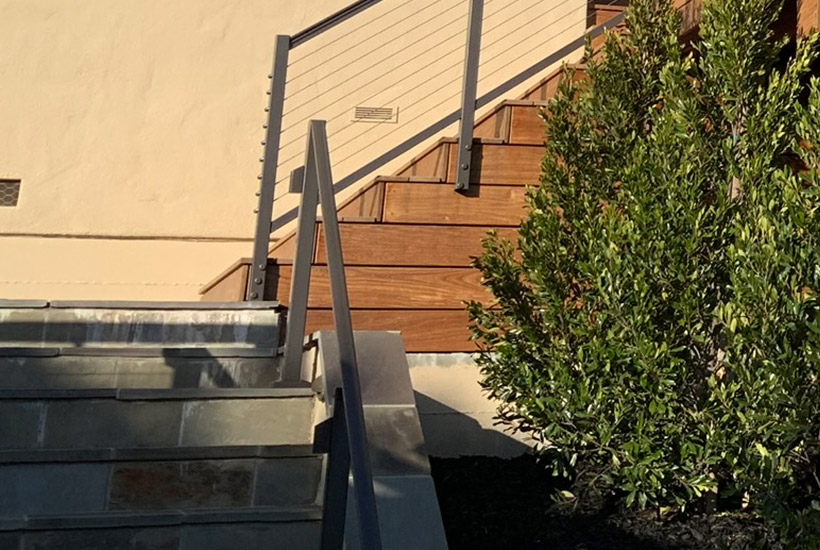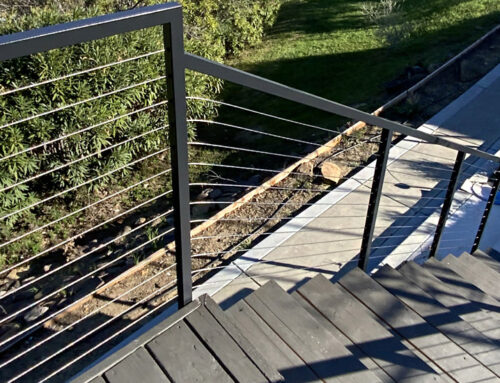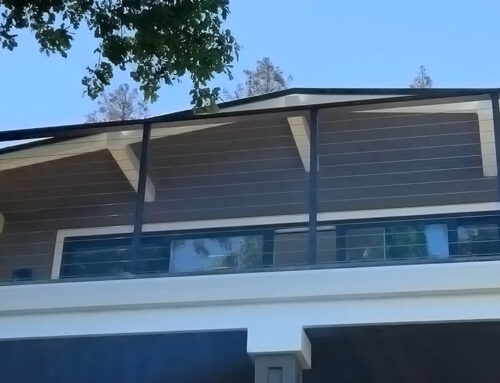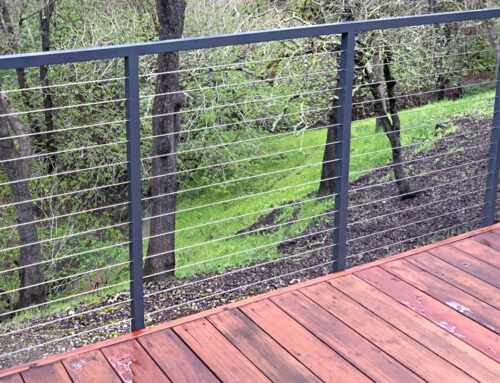If you’re asking, “how high can steps be without a railing?” then you are, unfortunately, asking the wrong question. Any stairway that has four or more risers (the vertical part of the step) must have a railing, according to most building codes. It does not matter how tall or short those steps are.
Thinking height is relevant is not the only misconception you might have about when steps need a railing. Here are some misconceptions we can clear up about railings and railing building code.
1. The Topmost Riser Counts
Do you have three or four risers? In their effort to avoid putting in a railing, some people wonder if the topmost riser really counts towards the total. Afterall, it’s not really a step; it looks like just part of the floor or deck that is above the stairs, right? Unfortunately, that riser does count.
If you’re a little confused, stand a few feet from the stairs but facing them. Every vertical surface you see counts as a riser. If there are four or more, you need a railing. If you were counting the treads, or the part of the stair you stand on, instead you’d always be off by one step.
2. Handrails vs. Guardrails
It is easy to confuse these two terms because they sound like the same thing, just a railing that people hold onto to guard them against falls. However, in most building codes, there is an important distinction between the two.
Handrails are the railing that you use to support yourself as you walk up and down the steps. A guardrail is a railing that people should catch themselves on if they trip towards the edge of a deck, overlook, balcony, rooftop edge, or another vertical drop. There are many circumstances where guardrails are required, and they are usually based on the height of the surface they are guarding, unlike handrails.
You may require a handrail for the steps but then have a deck or patio that doesn’t need a guardrail, although this is rare. It’s more common to need a guardrail for the deck but not need a handrail for the two steps adjoining different deck surfaces. It all depends on the finer points of your specific building code.
3. Railing Height has Changed
So, after making some renovations, you’re looking to add a railing to the steps in or outside of your home. You’ve realized that a railing is still required, but where should it go? Don’t rely on the marks and faded spots left behind by the old railing. The basic height of handrails has increased in recent years in most building codes. Rails now need to be somewhere from 34-inches to 38-inches from the top of the risers. As people get taller on average, rails need to move up to support them safely.
4. Your Building Codes Take Precedence
No matter what you find here or in any other guide, you need to know your own building codes and refer to them when making your railing decisions. Asking a professional for help is a good way to ensure your railing is compliant and safe.
With the help of our experienced and dedicated professionals, you can have the perfect railing system in Yorba Linda or beyond.






